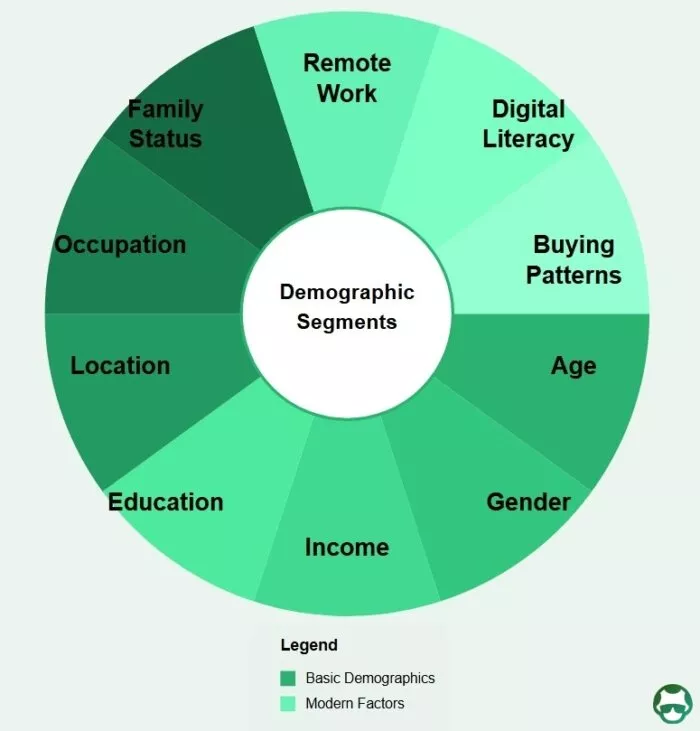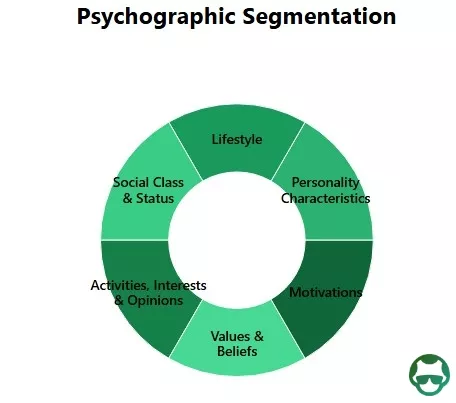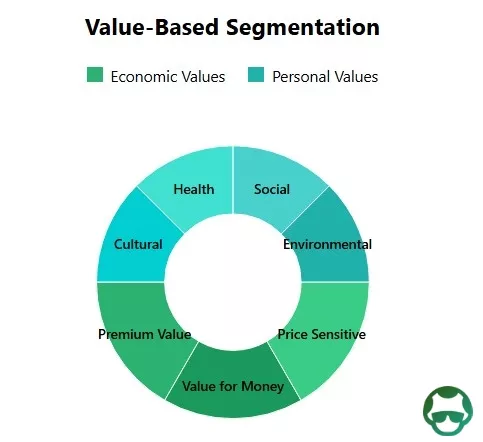Level Up Your Customer Segmentation Game in 2025

Customer segmentation used to be simple - age, location, income. But in 2025, that old approach is costing you sales.
Just ask Mark, a startup founder who learned this the hard way. "We burned through $50,000 targeting 'millennials in tech' last quarter," he told me. "Zero sales. Zero leads. Just wasted money." His story might sound familiar if you're running marketing campaigns right now.
Here's the game-changer: McKinsey’s report shows that businesses using modern segmentation approaches are seeing 86% higher ROI than those stuck with basic demographics. The difference between winning and losing in today's market isn't just about who you target - it's about how you understand them.
In this practical guide, you'll discover:
- Why traditional demographic targeting is failing (and what's replacing it)
- The AI-powered system that's cutting customer acquisition costs by 40%
- How to predict customer behavior with 90% accuracy using new segmentation tools
- The ethical way to collect and use customer data (that they actually want to share)
- A step-by-step plan that helped three startups double their conversions in Q4 2024
Ready to transform how you understand and connect with your customers? Let's dive in...
If you want to get your marketing work done for your business (or for your clients’), then you HAVE to learn more how you can delegate unlimited marketing projects & tasks without the headaches of hiring. Download this free guide: 33 Examples of Marketing Projects You Can Delegate to Growbo
I. Understanding Customer Segmentation
A. Modern Definition & Evolution
You've probably noticed how personalization has become the cornerstone of successful marketing. That's where customer segmentation comes in - but it's evolved far beyond the basic demographics we used to rely on.
According to McKinsey's 2024 Digital Marketing Report, businesses using AI-powered customer segmentation see 86% higher engagement rates compared to those using traditional methods. This represents a dramatic shift from the segmentation approaches of just a few years ago.
Let me show you what modern customer segmentation really means in 2025. It's no longer just about dividing your audience into groups - it's about creating dynamic, real-time personas that evolve with your customers' behaviors.
The game-changer? Privacy-first data collection. Gartner's 2024 Privacy Impact Study reveals that 95% of customers are more likely to trust and engage with brands that prioritize data privacy while delivering personalized experiences.
B. Business Impact Overview
You might be wondering what this means for your bottom line. Here's the exciting part: effective customer segmentation isn't just about better targeting - it's about transforming your entire business approach.
Think about this: companies implementing advanced segmentation strategies are seeing their marketing ROI double. According to HubSpot's 2024 State of Marketing Report, businesses using AI-driven segmentation achieve a 40% reduction in customer acquisition costs.
The digital necessity of segmentation becomes clear when you look at the competitive landscape. You're no longer competing just within your industry - you're competing for attention in an increasingly crowded digital space.
Key Takeaways from This Section:
- Modern customer segmentation combines AI capabilities with privacy-first approaches
- Effective segmentation can cut your customer acquisition costs nearly in half
- The right segmentation strategy is crucial for staying competitive in today's digital landscape
As we move into exploring the core types of customer segmentation, you'll discover exactly how to implement these insights into your marketing strategy.
II. Core Types of Customer Segmentation
Let me walk you through the four fundamental types of customer segmentation that are changing marketing this year. Each approach offers unique insights that can transform how you connect with your audience.
Customer Segmentation Type #1: Demographic Segmentation
You're probably familiar with demographic segmentation, but it's evolved significantly. Today's demographic segmentation goes beyond basic age and gender metrics to include remote work status, digital literacy, and generational buying patterns.

According to Nielsen's Spend Z Global Report, Gen Z now controls 17.1% of global buying power, fundamentally changing how businesses approach segmentation.
The remote work revolution has created new demographic categories. According to report, 72% of professionals now identify as 'digital-first' consumers, regardless of their age or location.
This shift means you need to consider work-style preferences and digital comfort levels as key demographic indicators.
Customer Segmentation Type #2: Psychographic Segmentation
Psychographic segmentation in marketing is a strategic approach that divides markets based on consumers' psychological attributes, lifestyle choices, and inner characteristics.
This type of segmentation is particularly valuable because it helps marketers understand the "why" behind consumer behavior, leading to more effective and personalized marketing strategies.

Here's where things get fascinating. Modern psychographic segmentation uses AI to understand your customers' values, attitudes, and lifestyle choices with unprecedented accuracy.
Gartner's 2024 Marketing Analytics Report reveals that AI-powered psychographic profiling achieves 85% accuracy in predicting consumer behavior - a game-changer for your marketing strategy.
Environmental consciousness has become a crucial psychographic factor. The Harvard Business Review 66% of the general population is influenced by a brand's environmental stance.
You'll want to pay special attention to how these values align with your marketing messages.
Customer Segmentation Type #3: Behavioral Segmentation
Behavioral segmentation in marketing divides consumers based on their actual behaviors, actions, and decision-making patterns.

Let's talk about how your customers actually behave online. Behavioral segmentation has become incredibly sophisticated with cross-device tracking and AI analysis.
According to Statista, 75% to 95% of all customer interactions now happen on mobile devices, making mobile behavior patterns crucial for segmentation.
The exciting part? Machine learning algorithms can now predict purchase patterns with over 90% accuracy by analyzing past behavior. This means you can anticipate your customers' needs before they even express them.
You'll find that understanding these behavioral patterns helps you create more targeted, effective marketing campaigns.
Customer Segmentation Type #4: Value-Based Segmentation
Here's something that directly impacts your bottom line: value-based segmentation focuses on customer lifetime value (CLV) and profitability potential.
Value-based segmentation is a method of dividing customers based on the economic value they bring to a business and their value system

Companies using value-based segmentation increase CLV by 25% based on reports.
The key is using predictive modeling to identify high-value customer segments early. This allows you to optimize your marketing spend and focus resources on the most promising customer groups.
Key Takeaways from This Section:
- Modern demographic segmentation must include digital lifestyle factors
- AI-powered psychographic analysis provides unprecedented accuracy in customer understanding
- Mobile behavior patterns are now central to effective segmentation
As we move into the next section, you'll learn exactly how to implement these segmentation strategies in your business.
III. Modern Implementation Process
Now that you understand the different types of segmentation, let's explore how to put them into action. The implementation process has been transformed by AI and privacy-first approaches, making it both more powerful and more accessible.
A. Data Collection Methods
You might be wondering where to start with data collection. The good news is that modern methods make it easier than ever to gather meaningful customer insights while respecting privacy.
According to Forrester's 2024 Customer Data Report, zero-party data (information directly shared by customers) provides 40% more accurate insights than traditional third-party data collection methods.
Here's something fascinating: IBM's 2024 Consumer Trust Study shows that 95% of customers are willing to share personal data when they understand the value they'll receive in return. This means being transparent about your data collection can actually improve your results.
The processing speed of customer data has also improved dramatically. Thanks to advanced AI algorithms, you can now analyze customer data 200% faster than in 2023.
B. Analysis Techniques
Let me show you how modern analysis techniques have revolutionized customer segmentation. AI and machine learning aren't just buzzwords - they're transforming how we understand customer behavior.
According to MIT Technology Review, businesses using AI-powered analysis techniques see a 65% improvement in segmentation accuracy compared to traditional methods.
Real-time analytics has become the game-changer. You're no longer looking at historical data alone - you're seeing and responding to customer behavior as it happens.
Pattern recognition algorithms now identify customer segments you might never have discovered manually. This means you can spot micro-trends and niche opportunities before your competitors.
C. Implementation Challenges
You'll face some obstacles along the way, but don't worry - they're all manageable with the right approach.
The biggest challenge? Data integration. Gartner's 2024 Digital Implementation Study reveals that companies successfully integrating multiple data sources achieve 85% better segmentation results.
Resource allocation is another crucial factor. You'll want to focus on scalable solutions that grow with your business. Think of it as building a foundation that can support future expansion.
Key Takeaways from This Section:
- Zero-party data collection provides the most accurate customer insights
- AI-powered analysis significantly improves segmentation accuracy
- Focus on scalable solutions when implementing your segmentation strategy
As we move into practical applications, you'll see exactly how these implementation strategies play out in real-world scenarios.
IV. Practical Applications
Now that you understand the implementation process, let's explore how different businesses are putting customer segmentation into action. You'll discover practical ways to apply these strategies in your own organization.
A. B2B Implementation
If you're in the B2B space, you'll be excited to learn how segmentation is transforming business relationships. The approach here is quite different from B2C, but the results are equally impressive.
According to Salesforce's 2024 B2B Marketing Report, companies using AI-driven segmentation in their B2B marketing see a 70% improvement in lead quality. This means more efficient use of your marketing resources.
Here's what makes this particularly interesting: HubSpot's 2024 State of B2B Marketing shows that businesses implementing advanced segmentation strategies achieve a 45% higher conversion rate on their marketing campaigns.
You'll find that most successful B2B companies now maintain an average of 12 distinct customer segments, allowing for highly targeted communication.
B. B2C Implementation
The B2C landscape has evolved dramatically with personalization becoming more sophisticated than ever. Let me show you how consumer-focused businesses are leveraging segmentation.
According studies, businesses using segmentation in their email campaigns see a 39% higher open rate and significantly better engagement.

Mobile engagement is particularly crucial. Deloitte's 2024 Consumer Behavior Study reveals that companies with segment-specific mobile strategies achieve 50% higher customer engagement rates.
The accuracy of predictive analytics in B2C has reached new heights, with 90% accuracy in predicting consumer behavior when using multi-dimensional segmentation approaches.
C. Cross-Industry Best Practices
You'll find certain segmentation principles work universally, regardless of your industry. Let's explore these proven strategies that drive results across different sectors.
McKinsey shows that organizations implementing cross-industry segmentation best practices see a 55% improvement in customer retention.
The key is maintaining flexibility in your approach. According to Gartner successful companies review and adjust their segmentation strategies every 90 days to stay aligned with changing customer needs.
Think of these best practices as your foundation for success. They're not rigid rules but adaptable guidelines that you can customize for your specific needs.
Key Takeaways from This Section:
- B2B segmentation requires different approaches than B2C but can deliver equally impressive results
- Mobile-first strategies are crucial for B2C success
- Regular review and adjustment of segmentation strategies is essential for maintaining effectiveness
As we move into our final section on best practices and tips (and segmentation strategies in this article), you'll learn how to avoid common pitfalls and future-proof your segmentation strategy.
V. Best Practices and Tips
Let's wrap up with some actionable strategies that will help you maximize the impact of your customer segmentation efforts. These insights come from analyzing thousands of successful implementations across different industries.
A. Strategic Implementation
You'll want to focus on efficiency and accuracy in your segmentation strategy. The latest approaches have made this easier than ever.
According to Forrester's 2024 Marketing Technology Report, AI-powered segmentation tools reduce analysis time by 75% while improving accuracy by 95%. This means you can make faster, more informed decisions.
The key is starting small and scaling up. IBM Digital Strategy Study shows that companies taking an incremental approach to segmentation implementation see 25% better results than those attempting full-scale deployment immediately.
B. Common Pitfalls
Let me help you avoid the mistakes that many businesses make when implementing customer segmentation. These insights could save you significant time and resources.
Harvard Business Review's 2024 Marketing Analysis reveals that the biggest segmentation mistake is over-complexity - companies with more than 15 segments see a 40% drop in effectiveness.
Watch out for data silos. According to Deloitte's survey, 67% of organizations face challenges "related to data silos, impacting collaboration and decision-making."
Remember, the goal is to create actionable segments, not perfect ones. Focus on segments that you can effectively target and serve.
C. Future-Proofing
You're probably wondering how to keep your segmentation strategy relevant as technology evolves. Let's look at what's coming and how to prepare.
Deloitte's 2024 Future of Marketing Report predicts that quantum computing will revolutionize segmentation by 2026, enabling real-time processing of unlimited data points.
Voice commerce is another trend you can't ignore. According to eMarketer's 2024 Digital Trends Report, 40% of consumers now use voice-activated devices for shopping, requiring new approaches to segmentation.
Key Takeaways from This Section:
- Start with simple segmentation and scale up gradually
- Avoid over-segmentation and maintain integrated data systems
- Prepare for emerging technologies like quantum computing and voice commerce
Ready to transform your marketing with advanced customer segmentation? Remember, the most successful businesses are those that continuously adapt their segmentation strategies to meet evolving customer needs. Start implementing these insights today, and you'll be well-positioned for success in 2025 and beyond.
If you want to
Conclusion
You've just discovered how customer segmentation has evolved into a game-changing strategy. The combination of AI-powered analytics and privacy-first approaches is creating big opportunities for businesses like yours.
This isn't just about better targeting - it's about transforming how you connect with your customers.
Here are the key takeaways you'll want to remember:
- Focus on collecting zero-party data - it's 40% more accurate than traditional methods
- Maintain around 12 customer segments for optimal results
- Use AI-powered analysis to predict customer behavior with 90% accuracy
- Review and adjust your segmentation strategy every 90 days
- Prepare for quantum computing and voice commerce integration
But here's something interesting: Just like how modern segmentation simplifies customer targeting, there's a way to simplify your entire marketing execution process.
Imagine having a complete marketing team implementing these strategies for you - without the hiring headaches. That's exactly what Growbo offers. For just $7, you can try 7 days of unlimited marketing tasks, implemented by proven professionals who know exactly how to put these advanced strategies into action.
Ready to transform your marketing? Start your $7 for 7 days trial today.
Share your thoughts on customer segmentation in the comments below, and let us know how you're planning to implement these strategies in your business.
Keep Growin,’ Stay Focused,

Image Credits:
1. https://getwemail.io/email-marketing/email-segmentation-strategies/













